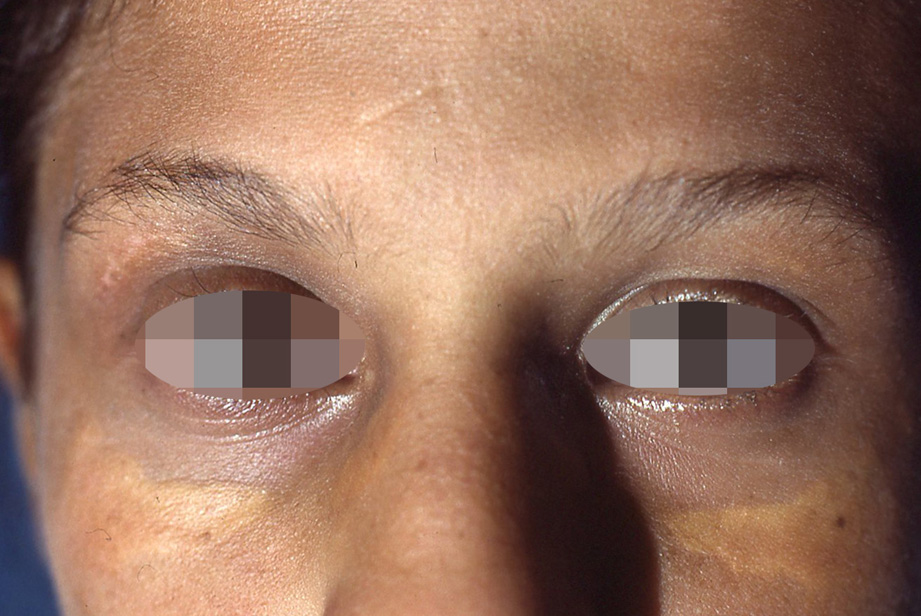Normolipemic Xanthelasma in children.

Downloads
DOI:
https://doi.org/10.26326/2281-9649.29.2.1993How to Cite
Abstract
Xanthelasmas are exceptional in children and are usually found in homozygous familial hypercholesterolemia. In the latter disease, in addition to xanthelasmas, there are palmar plane xanthomas, tendon xanthomas, eruptive xanthomas and tuberous xanthomas, especially on the extensor surface of the elbows, the knees, hands and feet (1, 4). Normolipemic xanthelasmas are even more exceptional, as only two cases have been described so far. The case most similar to ours is the one (5) of a 9-year-old boy who, at the age of 5, had bilateral yellowish plaques of the lower eyelids; in the following years the plaques extended to the entire periocular region. Another case (3) was described in a 7-year-old boy who had had myelomonocytic leukemia at the age of ten months; at the age of 7 years he presented xanthelasmas and four juvenile xanthogranulomas; the child also had a history of familial hypercholesterolemia. Hofman et al. (2) then described a case of plane normolipemic xanthomas and stated that these children should be monitored because they may undergo myeloproliferative diseases such as leukemia, lymphoma and paraproteinemias.
